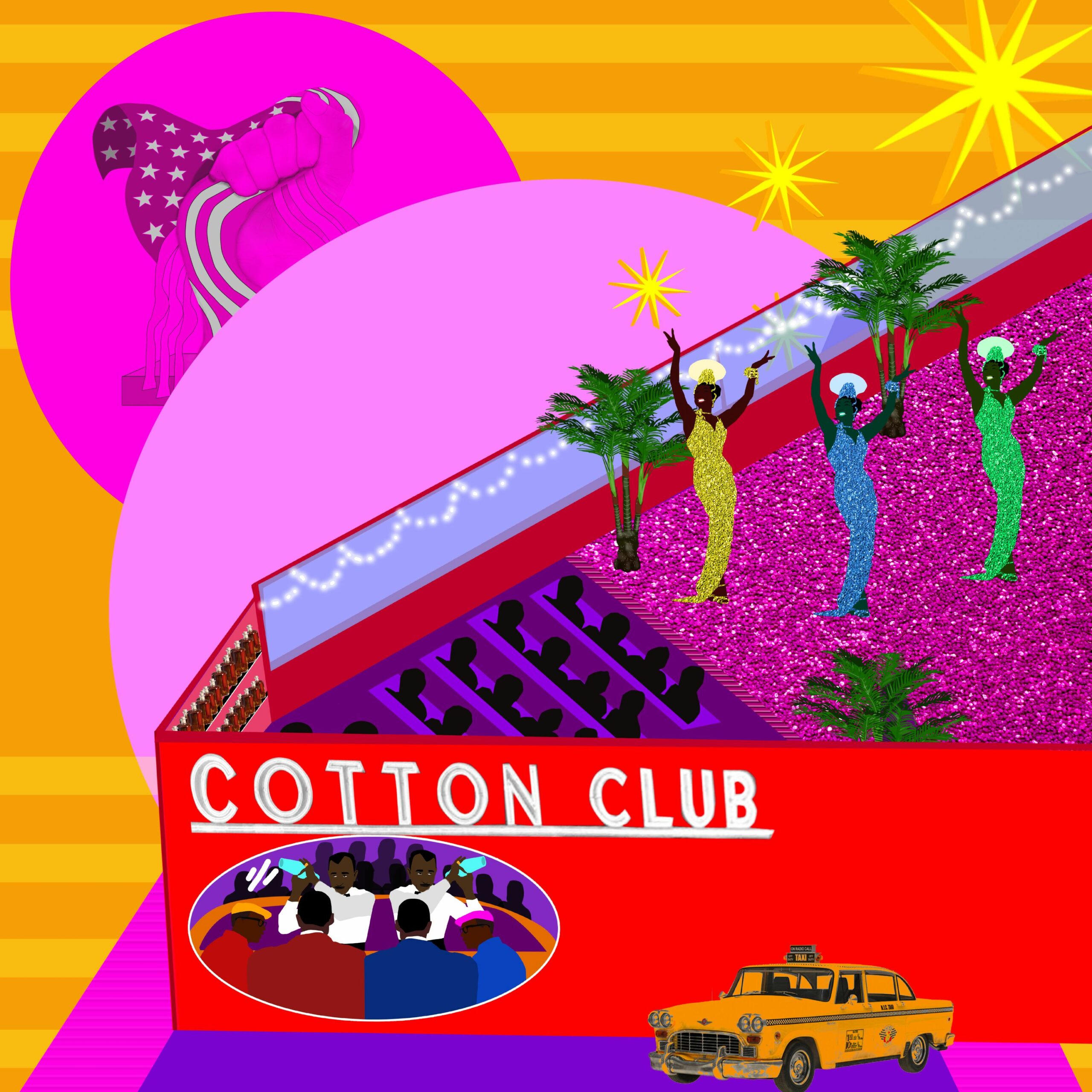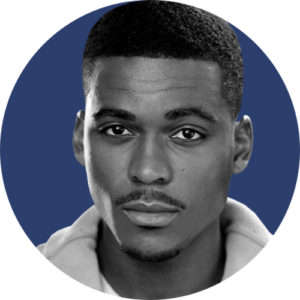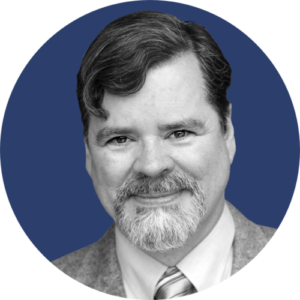
Black workers were expected to take on “respectable” employment in the early twentieth century, essentially a racist dog whistle to keep them in the dirtiest, most dangerous and low-paying jobs. While some Black people had the means to reject these types of jobs, most couldn’t afford to.
But power was there to be seized if you were willing to break the rules of respectability. In the “Negro metropolis” of Harlem, a complicated world developed in the shadows, one where Black men played by a different set of rules to claim freedom no matter the cost.
Whether by reform or by violence, though, there were also those determined to keep these race rebels at bay.
View Transcript
James Weldon Johnson: If you ride northward the length of Manhattan Island, going through Central Park and coming out on Seventh Avenue or Lenox Avenue at One Hundred and Tenth Street, you cannot escape being struck by the sudden change in the character of the people you see.
Kidada E. Williams: That’s James Weldon Johnson—activist, poet, and the author of Black Manhattan—describing a trip through New York City of the 1920s and ‘30s.
James Weldon Johnson: …you see more and more Negroes, walking in the streets, looking from the windows, trading in the shops, eating in the restaurants, going in and coming out of the theatres. Until, nearing One Hundred and Thirty-fifth Street, ninety per cent of the people you see, including the traffic officers, are Negroes. You have been having an outside glimpse of Harlem, the Negro metropolis.
KEW: A map drawn by E. Simms Campbell—the first African American illustrator to be syndicated by national magazines—is a guide to Harlem’s nightclubs, before and after Prohibition.
E. Simms Campbell: On Lenox, there are clubs opening and closing at all times. There’s too many to put them on this map. The stars indicate the places that are open all night.
KEW: Some of the Harlem Renaissance’s most famous spots leap off the map. The Savoy Ballroom is pictured there, with cartoonish dancers doing the Lindy Hop. Next door on the map is the Cotton Club, where Cab Calloway is crooning “Hi De Hi De Ho,” backed by his band.
E. Simms Campbell: Radium Club…Theatrical Grill…Small’s Paradise…Glady’s Clam House—Gladys Bentley wears a tuxedo and high hat and tickles the ivories. Club Hot-Cha—nothing happens before 2 am. Ask for Clarence. Tillies—Specializes in fried chicken, and it’s really good.
KEW: Campbell’s map isn’t to scale; it packs the frenzied nightlife of Harlem into a small magazine spread. There’s enough there that it would be hard to choose where to go and what to see if you only had one night.
E. Simms Campbell: The only important omission is the location of the various speakeasies but since there are about 500 of them you won’t have much trouble…
James Weldon Johnson: But, of course, no one can seriously think that the two hundred thousand and more Negroes in Harlem spend their nights on any such pleasance. The vast majority of them are ordinary, hard-working people confronted with the stern necessity of making a living, of making both ends meet, of finding money to pay the rent and keep the children fed and clothed neatly enough to attend school; their waking hours are almost entirely consumed in this unromantic task.
KEW: In the industrial North and Midwest, “respectable” employment most available to Black migrants were the dirtiest and most dangerous jobs in factories, or the menial gigs in the service industry—as maids, janitors, and butlers. These jobs cost workers as much as they paid. If they could, Black people rejected work they found low-paying or ruinous to their physical or emotional health. But they often couldn’t afford to.
James Weldon Johnson: And it is a task in which they cannot escape running up against a barrier erected especially for them, a barrier which pens them off on the morass—no, the quicksands—of economic insecurity. Fewer jobs are open to them than to any other group; and in such jobs as they get, they are subject to the old rule, which still obtains, “the last to be hired and the first to be fired.”
KEW: But in the basements and back alleys of the “Negro metropolis,” there was money to be made and power to be claimed. Stitched into the tapestry of Harlem’s upright living and respectable leisure was a disorderly, bacchanalian strand of theft, sex work, con artists, bootlegging, speakeasies, numbers running, and gambling.
James Weldon Johnson: Harlem has its sophisticated, fast sets, initiates in all the wisdom of worldliness. And Harlem has, too, its underworld, its world of pimps and prostitutes, of gamblers and thieves, of illicit love and illicit liquor, of red sins and dark crimes.
KEW: There, Harlemites could seize a different kind of freedom than we’ve explored so far.
In this episode, stories of the race rebels: Black men who played by a different set of rules. Who responded to racism and brutality by relying on cunning, exploitation, and violence to obtain personal freedom and power. It was high risk. And it didn’t guarantee reward.
Among the stories of heroes and heroines who put race (and civil rights) first, there were people like Julius William Miller: individualistic, fully human, messy, and flawed.
Like most migrants and immigrants flooding into New York at the turn of the 20th century, Miller was trying to rise and make as much money as possible before the city chewed him up and spat him out. And so he put one foot in the formal economy—legitimate, upstanding “respectable” employment—and another in the informal one.
Most of what we know about Julius Miller comes from newspaper, police, and court reports. Some papers described him as a “career gambler” and a “dope fiend.” Others called him a “man of affluence.” All of which was probably a little bit true.
Chicago Defender: The police say that Miller was sent to the penitentiary for receiving stolen goods in 1907, served six months for vagrancy in 1908, and in 1918 was sentenced for felonious assault in connection with a shooting.
KEW: In daylight hours, Julius Miller was a porter, living the respectable life Black elite and middle-class reformers encouraged among recent migrants from the South. But at night, Miller was known as “Yellow Charleston”, a brother who rented a dark basement, ran low stakes crap games, and bootlegged.
Tall and muscular, light-skinned with angular features and well-dressed, he was either in his mid-30s or early 40s when he ran the gambling club. He was married to a beautiful, dark-skinned woman named Rose and they had two doll-like daughters, Evelyn and Florence.
Miller wanted more for himself and his girls than what carrying luggage and loads for travelers or shoppers provided. So he turned to illegal side hustles.
In Harlem’s underground, Miller was cosmopolitan. Flush with cash. Dapper. Unapologetic. A challenge to middle-class and elite notions of respectability that he tried to embody during the day, in public.
One Saturday night, back in the spring of 1924, one of Harlem’s speakeasies saw some particularly exciting—and gruesome—action.
New York Times: John Parker, Julius Miller, and four other Negroes were playing a dice game in a basement at 129 West 134th Street.
KEW: The basement housed Miller’s gambling club—not mentioned on Campbell’s map—and it was in full swing. But underground events like this can go sideways fast. What really happened was contested in the papers. The New York Times reported:
New York Times: Miller went broke. He asked Parker, a heavy winner, to make him a loan. Parker insisted that those who went broke in the game must remain out of it. According to the other players, Miller drew a pistol and fired a shot into Parker’s abdomen.
KEW: But according to the Afro-American, out of Baltimore, and Miller’s own statement to the police:
Afro-American: …John Parker, who is known throughout Harlem as a “sport” and gambler, entered the game and lost all his money. Parker grumbled. Miller told him to “cut out the rough stuff on account of ladies next door.”
KEW: Miller said Parker kept it up—claiming he was cheated—asking loudly for loans so he could keep gambling. Miller started for him, to escort him out, and Parker pulled a knife. Miller pulled his gun.
The New York Age: Miller, aka “Yellow Charleston” had shot and killed one of the patrons of his gambling room…
Afro-American: Miller ran through the hallway to the roof. Across the roofs he ran. Then he ran out to the street…
The New York Age: …realizing what he had done the murderer left the place, made his way to the roof, and went across roofs to 119 West 134th street, where he descended.
KEW: Miller’s underground was a complicated world—of deception, ruthlessness, danger, and death—packed with men and women who were all trying to rise by any means.
Afro-American: At the corner, outside Barron Wilkins’ Exclusive Club…he saw Barron himself…Miller ran up to him.
KEW: Unlike Miller, Barron Wilkins was a public figure known far and wide.
Afro-American: Six feet tall and of powerful frame, he conducted cabarets or sporting places in Norfolk, VA, Atlantic City, Washington and Chicago…
The Atlanta Constitution: To Barron Wilkins’ place came the flow and wash of all Manhattan’s raciest nightlife…The “barron” was always there to nod and bow and boom with pleasure to see the crowds come.
KEW: Born in Virginia in 1867, Wilkins saved his earnings from working as a busboy and restaurant manager, and migrated to New York to open his own businesses.
Wilkins’ “Exclusive Club” in Harlem was the polar opposite of Miller’s gambling den, complete with a restaurant and dance floor. It catered to a select patronage—primarily white people coming into Harlem for a night after seeing a Broadway revue. Scattered among the crowds were Black Harlemites who were particularly light-skinned or Black musicians and sportsmen who were especially famous.
New York Times: Nightly automobiles drive up to its entrance to unload handsomely gowned women with prosperous looking escorts. Waiters pass among the well-dressed guests, taking and filling their orders.
KEW: Though his clubs were technically above-ground and above-board, Wilkins participated in the informal economy, too—especially during the rise of Prohibition—making his mark and extra money through bootlegging, gambling, prostitution, extortion, and political graft. According to the Pittsburgh Courier:
Pittsburgh Courier 1: “He had to pay the police enormous sums of money,” said one man in the street, “to keep his places open.” It is alleged he owned two more cabarets in addition to the Exclusive Club on West 134th Street. It is rumored that Wilkins is not as wealthy as his appearance in business would seem to indicate. It is said he made an enormous sum in racing, baseball, and open gambling, but that he had to spend so much for protection that it caused him to struggle continuously.
KEW: Prohibition made it harder for Wilkins to serve his clientele exactly what they wanted, but people didn’t stop coming.
New York Tribune: To Wilkins’s back room the night owls began to flock. There was a string of big automobiles and taxicabs about the place at all hours.
To get into the place, one entered what appeared to be the hall of an apartment house, and then through a dark passage reached a large room where there was music of a kind and many bad Negroes of both sexes. There, too, many white women resorted, and the singing and dancing would, to say the least, not satisfy the Broadway standard of decorum…
KEW: Fun at Wilkins’ clubs often spilled over from a Friday night to the wee hours of a Saturday morning.
New York Tribune: The milkmen were on their routes when the fun was at its height. In Wilkins’ place, a mulatto girl was singing something about a “hula hula maid” when a white slummer, watching the door, screamed, “The police!”
Her cry was the signal for pandemonium. All the women in the place, and there were several score, began yelling at once. The men, Black and white, swore. There was no chance to escape. The police, backing all hands into a corner, picked out Wilkins and several of his help and deposited them into a patrol wagon. Then the others were told to depart.
Within five minutes the crying women and scared men had worked their way through the jeering crowds outside to their cars and started for downtown.
KEW: Exploited, vulnerable young people propped up Wilkins’ criminal enterprises. Especially women, who found themselves forced into survival sex and into violent and exploitative domestic work. That drew the attention of reformers, putting men like Wilkins into the frame.
Pittsburgh Courier 1: Social and uplift workers claim that Wilkins’ place, frequented by Jack Johnson, Peggy Joyce, and hundreds of others, was the one big obstruction to the moral betterment of the community. It is also said that more than one Harlem girl attributes her first step on the downward path to the influence of Wilkins.
KEW: By 1924, Wilkins had achieved kingpin status, said to be worth $200,000—multiple millions in today’s money. He had real power and blooming respectability, commanded loyalty, and was owed favors he could call in as needed.
Pittsburgh Courier 1: Barron is reputed as being Harlem’s richest man.
Pittsburgh Courier 2: Shortly after he married his second wife, Mrs. Carolyn Sparrow, she ran over a white man and killed him outright in Atlantic City while driving her new car, a gift from her husband. The case never came to trial, but Wilkins is alleged to have remarked once: “Baby will never know what it cost me to get her out of that scrape.”
New York Times: Wilkins was indifferent in politics, swinging between the Democratic and Republican parties as the mood suited or as his private interests dictated. The police say that his influence was built largely on his practice of extending a helping hand to those who required emergency financing.
KEW: According to the New York Times, when Miller ran into Wilkins on the street in Harlem, he rightfully thought he might get some of that “emergency” charity.
New York Times: Miller fled to the street toward the cabaret. He shared the general knowledge that Wilkins often helped with money those in desperate need of eluding the police.
Outside his cabaret, Wilkins was chatting with a Negro named Benni C. Parker, known in the neighborhood as “Yum Yum.” Miller ran up to them, gasping.
“I just shot a guy and need $100 for a getaway.”
“I haven’t got that much money,” replied Wilkins.
KEW: Miller later told a different story, reported in The Afro-American:
Afro-American: He told the police that several weeks ago he stole liquor from a warehouse after tying up the guard. He sold it, he says, to Barron Wilkins, for $700. Since then he had asked for his money. Barron paid him only in doles. In all, Barron had paid him $360, he said.
Miller said that when he ran up to Barron, dodging through the rain, he told Barron: “Give me the rest of my dough and give it to me quick: I’m in trouble.” Wilkins…shook his head and moved a hand toward his rear pocket, menacingly. Miller said, “I thought he was going for a gun…”
The New York Age: It is doubted that Harlem was ever stirred as on Saturday evening, just a few minutes before 7 o’clock, when four pistol shots rang out at the corner of 134th and Seventh avenue…
Afro-American: Wilkins, Miller says, shook his head and moved a hand toward his rear pocket menacingly. Miller shot him three times.
KEW: In 1914—a decade before Barron Wilkins and Julius Miller met on the street in front of the Exclusive Club—the New York Age published a series of articles called, “CLEAN ‘EM OUT!”
The New York Age: New York City needs a moral Awakening. It needs more than that. It needs a moral cleansing and it needs it today. Street walking women and the animals that live upon their dirty money and boldly loaf in the path of good people must go. Thrones of lewdness and castles of drunkenness must go. And decent people who harbor low characters and sustain their crimes, they must also.
Harlem is infested with too many saloons for the good of the 40,000 Negroes in that section. Much of the whiskey sold is of that brand referred to as “the kind that makes you fight your mother…”
KEW: Many old Harlemites believed reform was the way to convince white power brokers that Black New Yorkers should be granted access to better jobs, housing, and more—hoping to rid their communities of corruption, vice, and the racist associations that came with them.
These reformers put their faith in the formal economy and respectable Black work—in factories or the service industry—and living; going to church, school, and giving back to one’s community.
The New York Age: We must look to the good, quiet, decent element in our churches and homes that constitutes the true backbone of the real social structure of the community. It is their battle and they must help bear it. It is the preachers’ battle and they must help bear it. It is a business man’s battle and he must help bear it. The fighting begins now, today.
KEW: Reformers embraced an ideology of racial uplift and formed organizations to achieve it, like the National Urban League, the National Association of Colored Women, and the NAACP. Editors at the New York Age were particularly concerned about Harlem because it was a place where “respectable” Black Americans should have felt safe.
The New York Age: One letter from an admirer asks, “Why Harlem? Isn’t there other bad places in the city? What is the matter with 53rd Street?” There is all the matter with 53rd Street.
KEW: The stakes were high. White people saw anyone in Harlem who wasn’t an intellectual elite as a criminal. If Harlem didn’t clean itself up, white people were going to come in and do it their way, which meant violence and destruction.
The New York Age: Harlem must be saved because it is to be always the center of the Colored population of our city. Our churches will someday be planted there. The homeowners are already there and thousands of good people have taken apartments there, for its many decided advantages over other sections. The children are there. The business houses are there. The social workers are there. Therefore Harlem is worth fighting for. It deserves the jealous protection of all good men.
KEW: Though he was attacked by reformers, Wilkins also wanted to clean up Harlem. Or, at least, he wanted to be in charge of what it looked like and how it ran, which suited his own professional and financial aims.
Wilkins formed the Colored Cabaret Owners’ Association, joining forces with fellow Black saloon keepers like John Conner. Their main concerns were that reformers were targeting the wrong people. White people were getting rich off of selling booze to Black men and prostituting Black women while Black club owners were taking the heat.
John Conner: The Colored saloon men of Harlem have a hard time of it. White men are getting rich selling liquor to our people but few Colored saloon keepers have a good size bank account.
KEW: Conner gave an interview to the New York Age in 1917, calling for Black Harlem to cater to Black-owned businesses so that they wouldn’t have to rely so heavily on white patrons from other neighborhoods.
John Conner: Harlem with its 60,000 Colored people furnishes wonderful business opportunities for the Negro, at least it will as soon as there is more race cooperation. The saloon keepers experience the same difficulty as those who engage in other business enterprises. The majority of our people would rather spend their money with a white tradesman although the money does the race no good and is not circulated among Colored people…
KEW: The dream was for Harlem to be self-sufficient and independent of white folks. But for the time being, “respectable” cabaret owners like Conner and Wilkins needed those white “slummers” and all their disposable income.
White visitors to Harlem paid for vice, sure. But earnings from the informal economy supported the formal one. Wilkins poured white slummers’ money into his own community in the form of charity.
Chicago Defender: Barron Wilkins was a man who lived in the age fighting for the uplift of his race. His advice to youngsters that came to his place was, “Go do something worthwhile.”
KEW: Money from vice supplied vital financial need: feeding the hungry, bailing out kin and failing businesses, loaning money to churches or their members to spare them from eviction or repossession, underwriting new business ventures, and employing job seekers.
Afro-American: He was known as a man with a big bank roll…and kept his hand in his pocket for his friends.
The New York Age: Local charities in Harlem were benefactors of Mr. Wilkins’ charity at all times.
KEW: Wilkins—or “The Barron”—lined the pockets of politicians that would vote in Harlem’s interests and leave his clubs alone. He funded Black sportsmen like boxer Jack Johnson, whose audacious championship wins brought honor and respect to the race.
No matter how much reformers, police, and agents of the state spoke with bass in their voices about crime, the informal economy’s centrality to local life made it hard to beat. Men like Wilkins and Miller were driven by a new Black male assertiveness that permeated the air at the turn of the century and took the U.S. by storm following the Great War—when Black men came home from Europe and re-asserted their demand for equal rights.
With new possibilities for freedom came new identities.
Asa Philip Randolph: Yes, there is a New Negro. And it is he who will pilot the Negro through this terrible hour of storm and stress. His presence is inevitable in these times of economic chaos, political upheaval and social distress.
KEW: According to socialists Asa Philip Randolph and Chandler Owen, migrants from the South like them were motivated by Jim Crow and inspired by global freedom movements. Educated and proud of their heritage, they seized the duty of carrying out their forebears’ dreams for them while advancing their own.
Chandler Owen: The New Negro, unlike the Old Negro, cannot be lulled into a false sense of security. He demands political equality. He who selects the representatives controls the representative. The New Negro stands for universal suffrage.
Asa Philip Randolph: He insists that a society which is based upon social justice can only be a society composed of social equals. He insists upon identity of social treatment.
KEW: The Wilkinses and Millers of the world—bootleggers, thieves, gamblers, sex workers, blues singers and dancers, and cabaret owners—may not seem like the activists that Randolph and Owen meant. But they were.
They challenged traditional notions of manhood and middle-class gentility that focused on physical labor and respectable lives and occupations by pursuing the informal economy, commercialized leisure, and sexual freedom in all its cis- and queer complexities.
But trying to reform Harlem in his own image—trying to rise and take his community with him—didn’t make Wilkins different enough from Miller, who had just shot a fellow gambler and was standing a foot from Wilkins, outside his Exclusive Club, demanding money.
The New York Age: “Yum Yum” Parker, so called on account of a slight impediment in his speech, swore that he was standing alongside of Wilkins, when Miller, known as “Yellow Charleston”, began firing.
New York Times: Miller set about doing the job thoroughly. He pressed the pistol against “Yum Yum’s” face…
Chicago Defender: He pulled the trigger twice but it jammed and would not go off.
Afro-American: He dodged across the street. He zig-zagged back again. He dodged into the hallway of No. 130. Up the stairs to the roof. Across the roofs toward Lenox avenue, throwing his pistol into an air shaft.
New York Times: When a rumor was spread that “Yellow Charleston,” the man accused of the shooting, was still in Harlem, scores of Negroes began patrolling the streets in search of him.
The New York Age: But he had disappeared as completely as though the earth had opened and swallowed him up.
KEW: Wilkins and Miller might have gotten caught up, and forgotten the inevitable costs of “the life.” The freedom that comes by way of unbridled power always comes with risk—and often prices to be paid—for the ways you seize it.
The New York Age: In less time than it takes to write the words, every avenue and cross street in the community was ringing with the news: BARRON WILKINS IS SHOT AND KILLED!
Chicago Defender: For hours after the shooting the crowd stood around the scene beneath umbrellas and discussed the good deeds of the slain cabaret owner.
Afro-American: Meanwhile, Miller slipped down the street. He hailed a taxicab. In it he rushed away downtown. He thought he might find friends. He left the taxi and wandered up the street, afraid of the street lights.
Chicago Defender: Automobile after automobile filled with rich white Saturday night merrymakers drove up to the Exclusive Club, Wilkins’ place of business, only to find that it has been closed. The news of the murder of Wilkins spread rapidly through Harlem in the downtown section.
Afro-American: Miller took a train to Jersey City. All night he slept in the tube station, fingering his $50, or prowling through the streets nearby. He was afraid to go ahead, afraid to turn back, afraid to stay where he was. Between all his evils, he chose the police. At least then he would know his destiny.
KEW: Maybe he thought that by turning himself in and claiming to have shot Wilkins in self-defense, he’d be spared the worst punishments.
The New York Age: Miller was booked on two charges of murder: one for the killing of John Parker, the other for killing Barron Wilkins.
KEW: While Miller faced a murder trial, Wilkins’s body was laid in state.
Chicago Defender: Space was inadequate to accommodate the thousands of dollars worth of floral tributes sent by innumerable friends. The body was viewed by fully 40,000 persons. The pallbearers included prominent white politicians.
The New York Age: A bloody shirt, a black suit, a gray overcoat, and a gray felt hat with black band, were exhibited in the Court of Special Sessions Tuesday morning as evidence against Julius William Miller, alias “Yellow Charleston”, who is on trial for his life charged with killing Barron D. Wilkins, noted cabaret keeper of Harlem.
KEW: Newspapers reported Miller being cool and collected to the point of being disinterested, willing to accept his fate. His family stood by him throughout the proceedings.
Afro-American: Hundreds of Wilkins’ friends attended the preliminary trial. So ugly was the feeling that the police searched the spectators for weapons. Miller feared he would be shot or mobbed by the crowd.
The New York Age: Three eye-witnesses, a woman tenant, “Yum Yum” Parker, and the chauffeur who was employed by Wilkins, testified that they saw Miller fire the shot that killed Barron D. Wilkins last spring.
The Chicago Defender: The slayer’s defense was that he killed Wilkins in self-defense after the latter made a move as if to draw a gun from his pocket.
KEW: The jury was out for 18 hours. When they came back, Julius William Miller was convicted of murder in the first degree.
The Chicago Defender: During the night, Miller’s wife, Mrs. Rose Miller and two children Florence, 7, and Evelyn, 9, waited nervously in the corridors of the Criminal Courts Building. When the verdict reached them, Mrs. Miller collapsed and the two children burst into hysterical sobbing.
KEW: Ironically:
The Chicago Defender: While the jury was deliberating over the fate of Miller, federal agents raided Barron’s Cafe and confiscated a large quantity of whiskey.
KEW: To hear different Black papers tell it, Wilkins’ posthumous standing in the community took a temporary dive—because of the way he died, and at whose hands. Wilkins’ involvement in “the life” had been an open secret. But the accusations that Wilkins owed a criminal like Miller bootlegging money were too specific for respectable Harlemites to ignore.
Pittsburgh Courier 2: Immediately, wild tales of graft and corruption began to go the rounds. In the final analysis, however, all Harlem is saying these words: “Barron died as he had lived: by chance.”
KEW: Both Wilkins and Miller seized their freedom by striving for power—a particular kind of power outside of the norms of “respectable” masculinity. They didn’t acquiesce to the roles Jim Crow tried to force upon them. Given limited options and resources, Miller especially did whatever he needed to do to provide.
And they weren’t traditional freedom fighter types, either. Wilkins bent the world to his own terms and lived by his own code. The collective good was an afterthought. But power didn’t mean control in 1920s Harlem. Wilkins and Miller chose risky paths to freedom. And that cost both men their lives.
New York Times: Julius William Miller, known in the Negro district of Harlem as “Yellow Charleston”, paid the death penalty tonight for the murder of Barron Wilkins, the Negro proprietor of a cabaret at 134th Street and Seventh Avenue, New York.
After he had been strapped into the electric chair and the black cap adjusted over his head, he asked for permission to speak. This was granted by the Warden, but through a misunderstanding the signal to turn on the current was given before the condemned man had the opportunity to talk. He was pronounced dead at 11:13. Only one shock was given.
Voice Actors

Aaron Goodson
Voice of Afro-American, Chandler Owen

Conrad Haynes
Voice of Asa Philip Randolph

Constance Swain
Voice of Chicago Defender, Pittsburgh Courier 1

Dale Leopold
Voice of The Atlanta Constitution

Dustin Ebaugh
Voice of The New York Times

Frank Harrison, Jr.
Voice of John Conner, Pittsburgh Courier 2

Jefferson A. Russell
Voice of James Weldon Johnson

Tim Jenkins
Voice of New York Tribune

William Barnett
Voice of E. Simms Campbell, The New York Age
Episode Resources
The following resources were utilized in the research and creation of this episode:
- Gail Bederman – Manliness and Civilization: A Cultural History of Gender and Race in the United States, 1880-1917
- St. Clair Drake and Horace Cayton – Black Metropolis: A Study of Negro Life in a Northern City
- Tiffany Gill – Beauty Shop Politics: African American Women’s Activism in the Beauty Industry
- Peter Gottlieb – Making their Own Way: Southern Blacks’ Migration to Pittsburgh, 1916-30
- Kali Gross – Colored Amazons: Crime, Violence, and Black Women in the City of Brotherly Love, 1880–1910
- Kali Gross – Hannah Mary Tabbs and the Disembodied Torso: A Tale of Race, Sex, and Violence in America
- LaShawn Harris – Sex Workers, Psychics and Numbers Runners: Black Women in New York City’s Underground Economy
- Saidiya Hartman – Wayward Lives, Beautiful Experiments
- Cheryl Hicks – Talk With You Like You a Woman: African American Women, Justice, and Reform in New York, 1890-1935
- Robin Kelley – Race Rebels: Culture, Politics, and the Black Working Class
- Shannon King – Whose Harlem is this, Anyway?: Community Politics and Grassroots Activism during the New Negro Era
- Earl Lewis – In their Own Interests: Race, Class and Power in Twentieth-Century Norfolk, Virginia
- Marlon Ross – Manning the Race: Reforming Black Men in the Jim Crow Era
- Martin Summers – Manliness and its Discontents: The Black Middle Class and the Transformation of Masculinity, 1900-1930
- Joe William Trotter, Jr. – Black Milwaukee: The Making of an Industrial Proletariat, 1915-45
- Victoria Wolcott – Remaking Respectability
